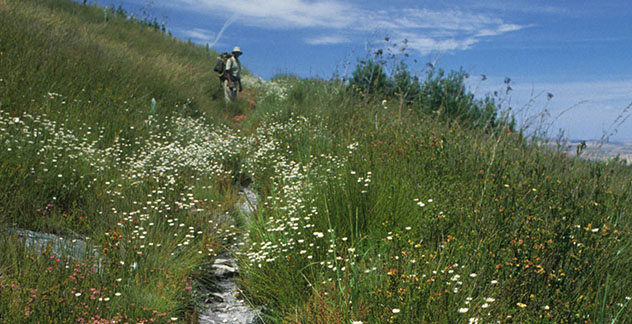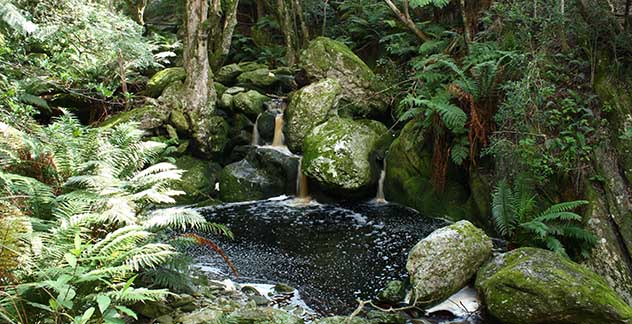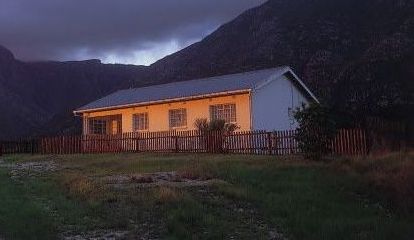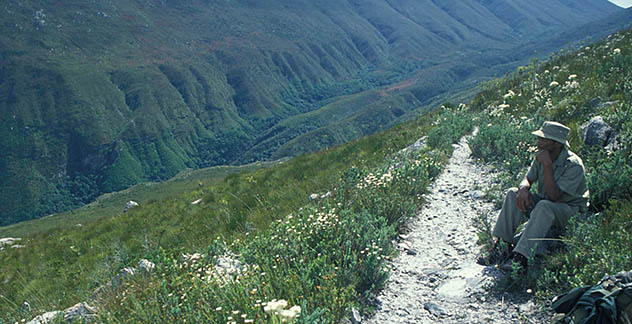In the 1700’s, a party of trekboers – those early burghers-turned-pastoralists who strayed from the Cape and fanned out in to the hinterland – made Swellendam one of their camps. It grew into a town (the third-oldest in the country) even though 30 years after it was founded, it consisted of only four houses.
Some 200 years later, Dr Marloth (a pioneering botanist) successfully petitioned the then Ministry of Lands and Forestry for the establishment of a small (190ha) flower/nature reserve on the heights above town. Although most of the indigenous forest had already fallen to the axe and the saw before Marloth made his stand, we benefit from his initiative in that today the reserve is more than 14 000ha in extent, with another 16 000ha or so of privately owned land having been proclaimed mountain catchment.
A person could grow accustomed to the reserve’s comfortable guesthouse (sleeps 8 guests in three rooms). The accommodation is fully equipped, including a microwave. The overnight huts on the six-day trail, however, are a little more prosaic. To cater for hiking groups, the huts can accommodate up to 22 people at a time, and have what are politely referred to as field toilets. Hikers must bring their own food, gas stoves, cooking/eating utensils and bedding. Drinking water is provided, as are mattresses.
Being part of the huge and fissured Langeberg, the Swellendam Mountain is primarily a hiker’s mountain, although it is possible to footle around the lowest of the lower paths for the best part of a day and still feel a sense of accomplishment. There are eight separate one-day trails; and a testing, six-day trek across the whole reserve (which can be shortened to a two day hike). The day hikes vary in length from just over a kilometre to 6km, but with cleverly considered link-ups, 19km can be achieved in a day.
There is no fixed mountain biking trail at Marloth, but there are any number of jeep tracks varying in length and severity to explore around the base of the mountain, both within the reserve and adjoining private plantations.




